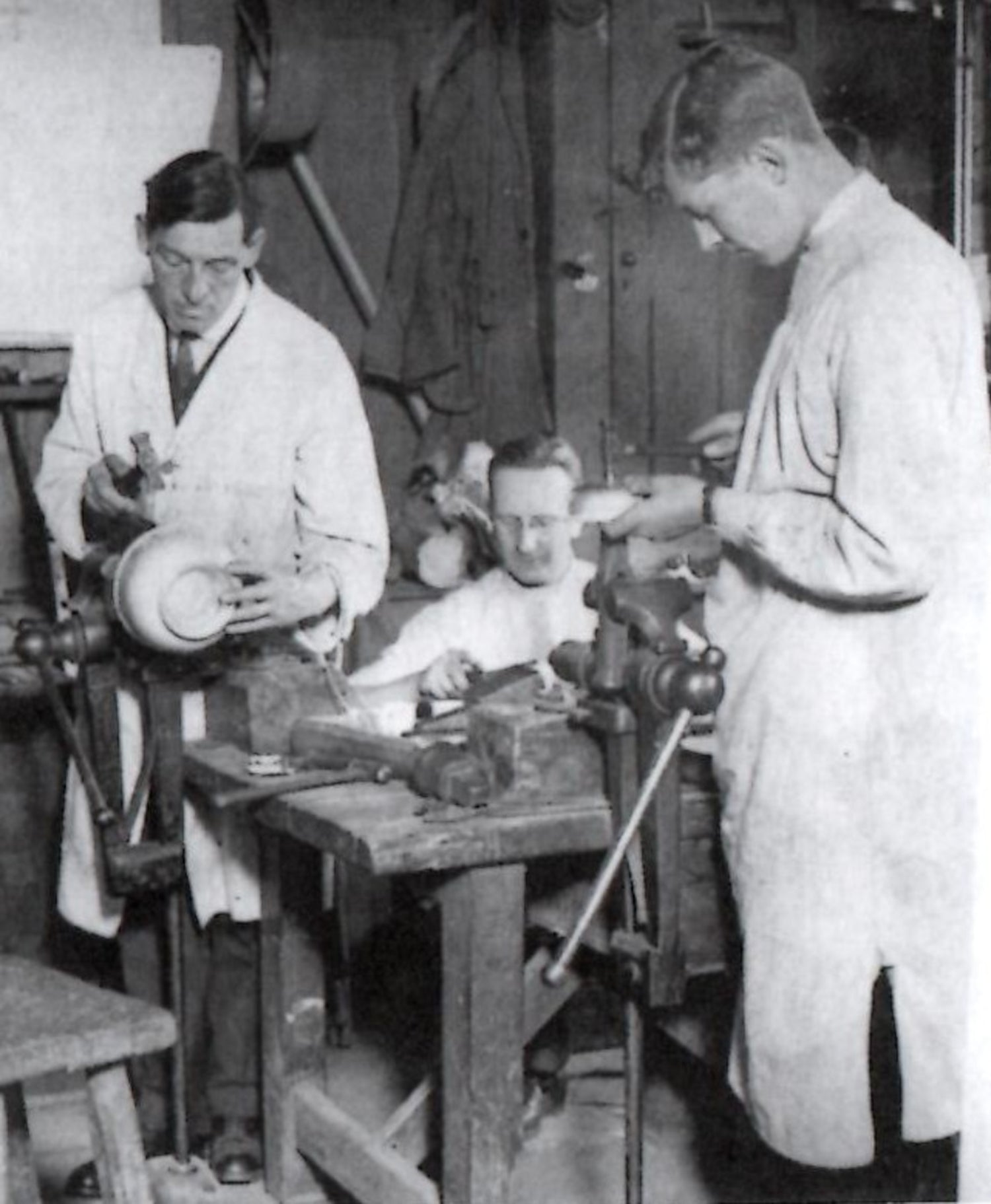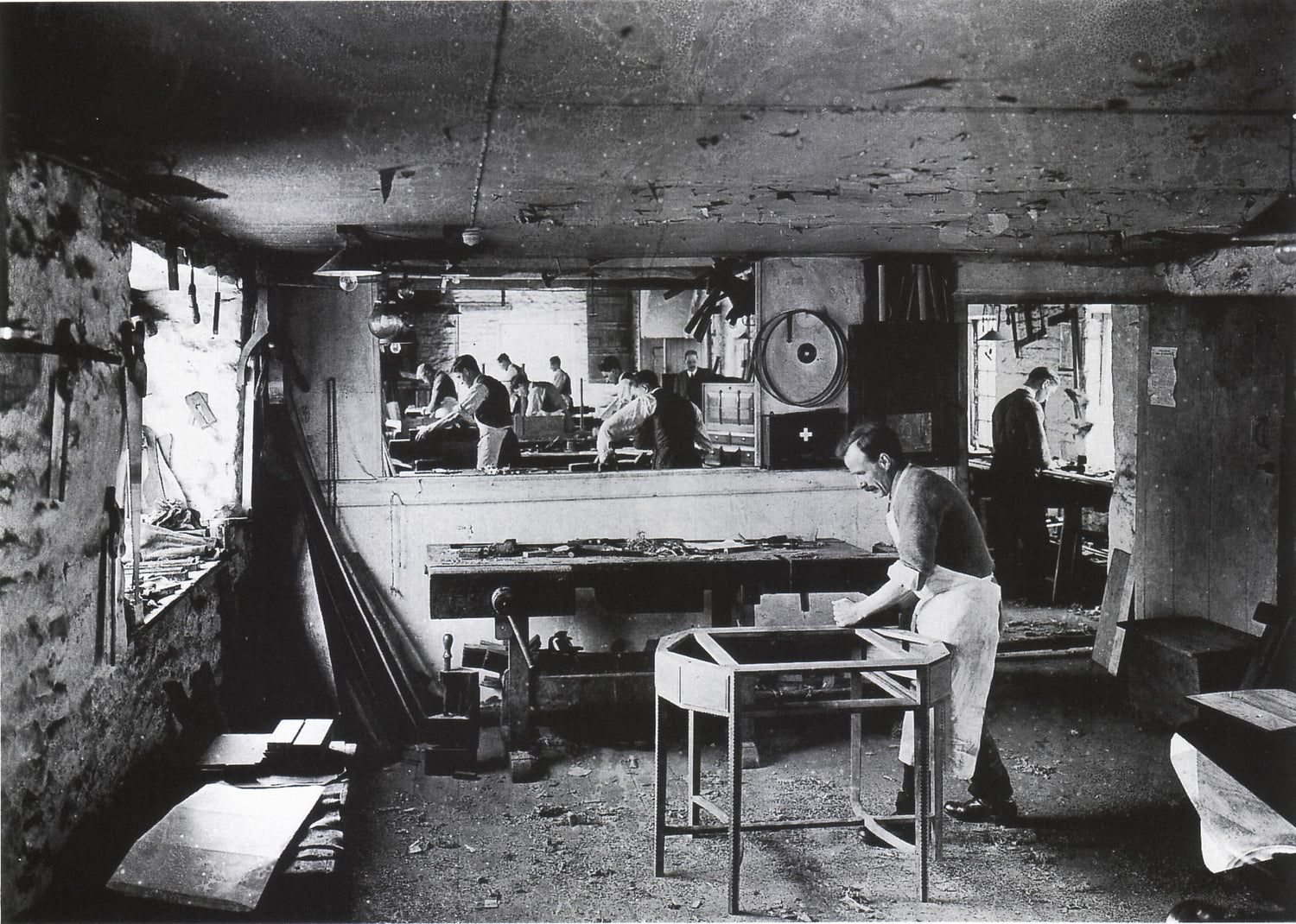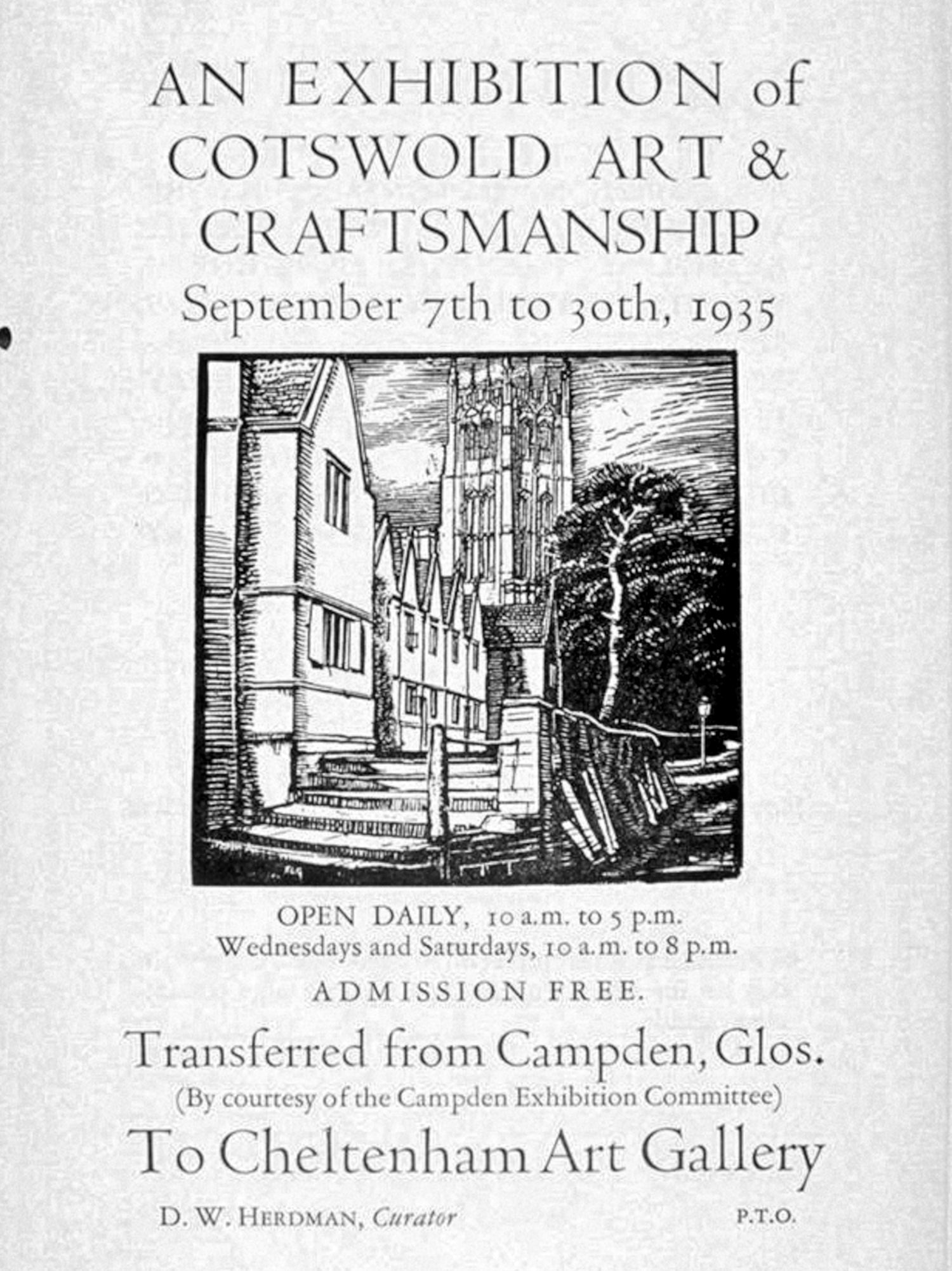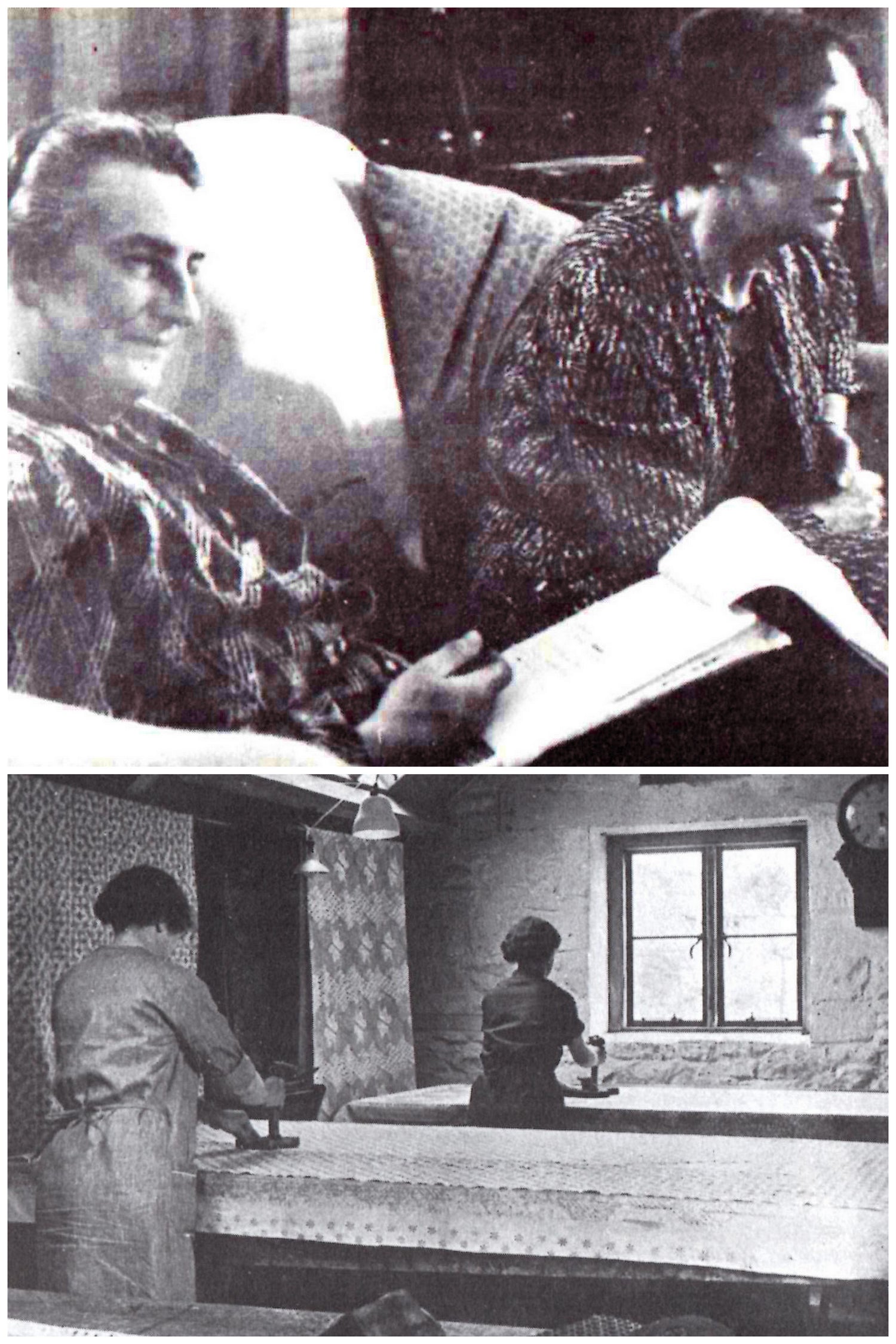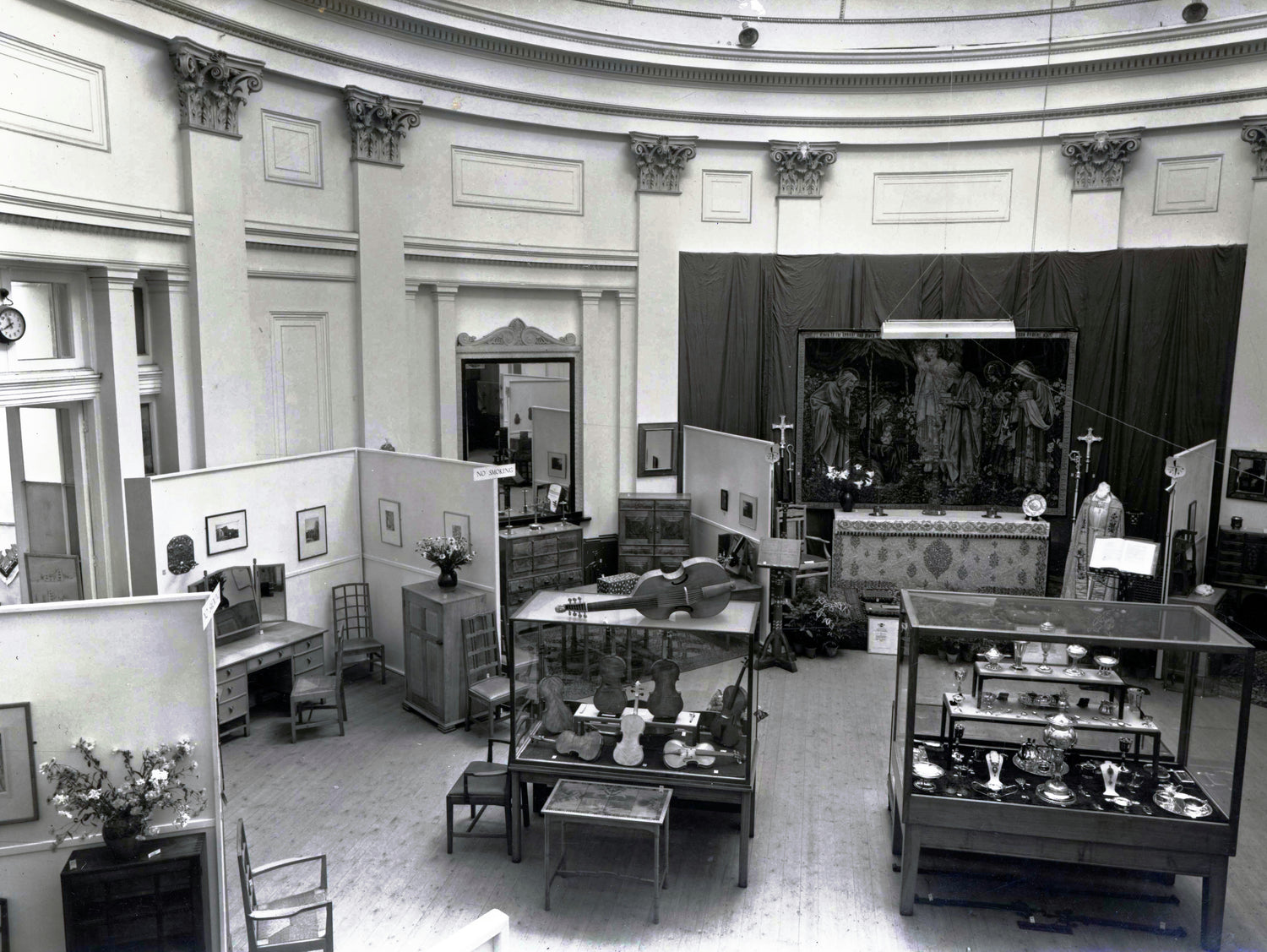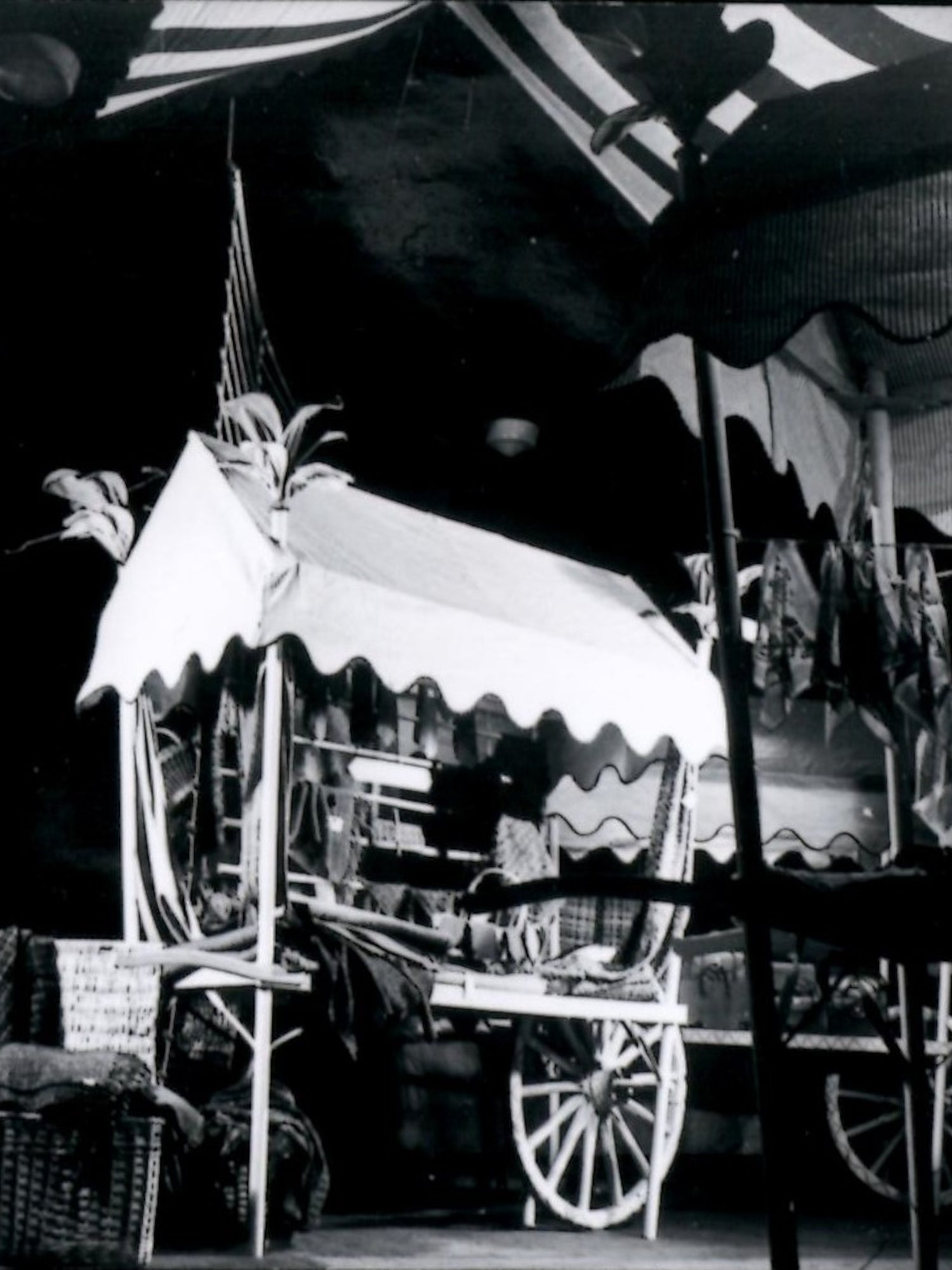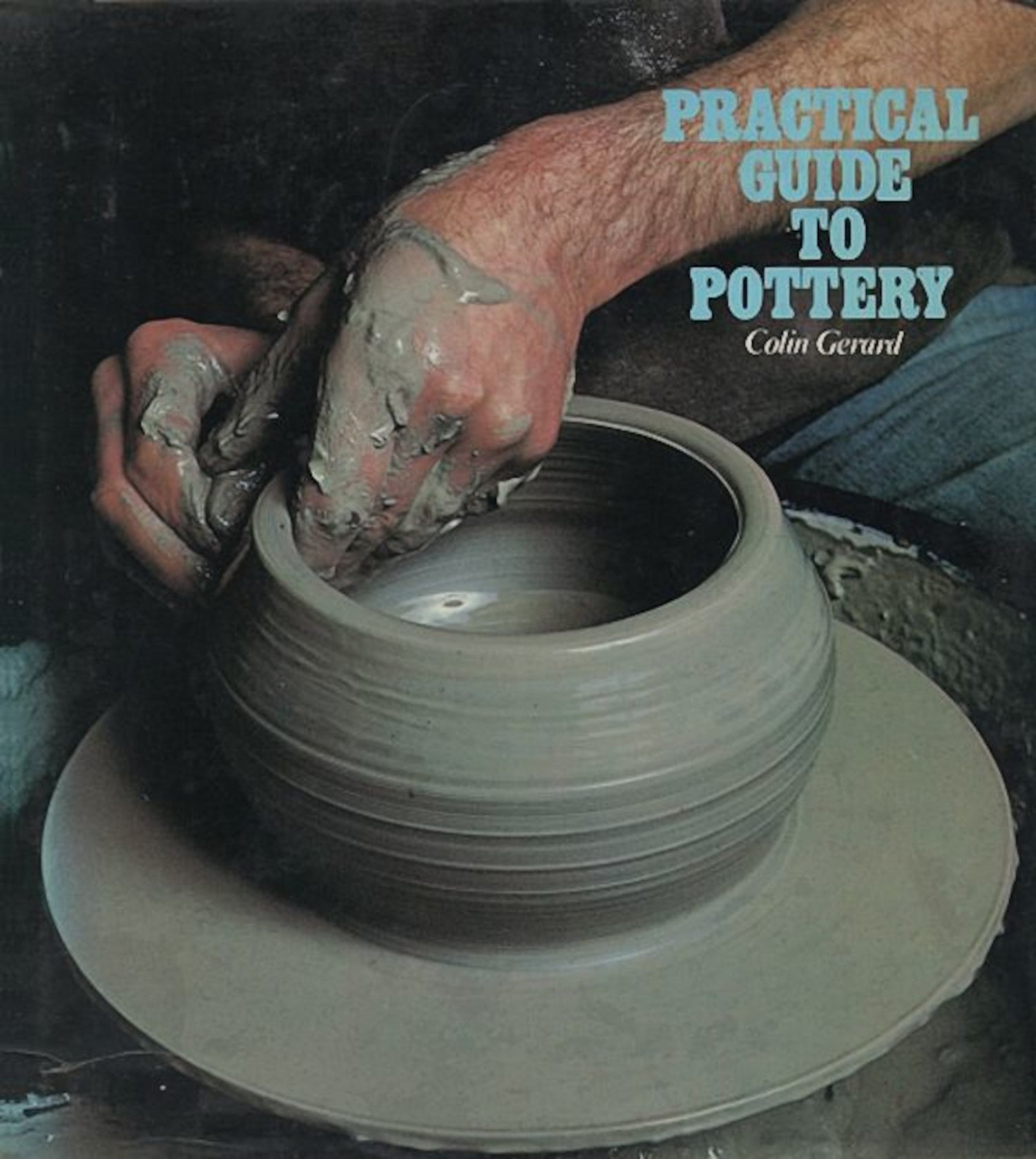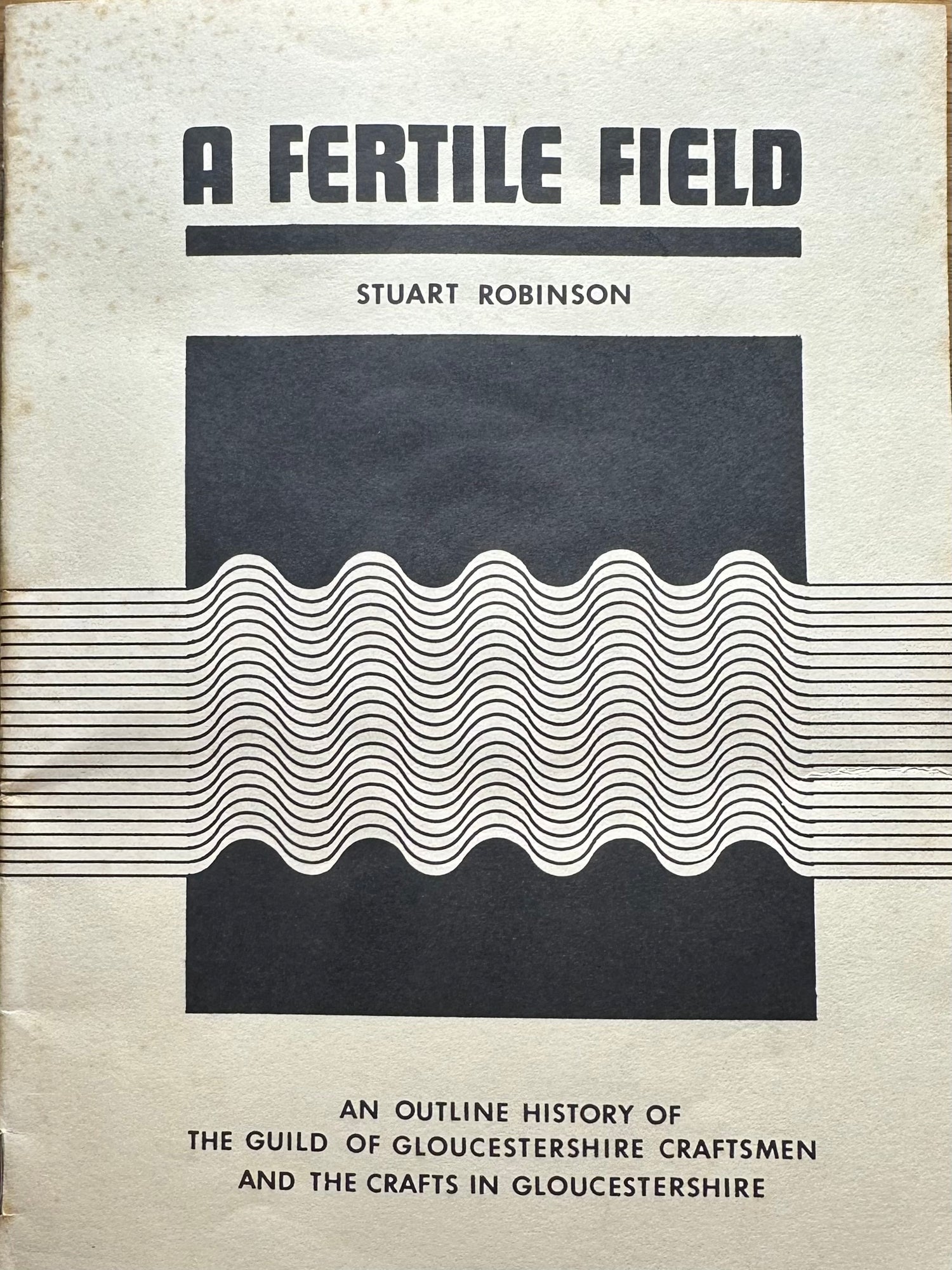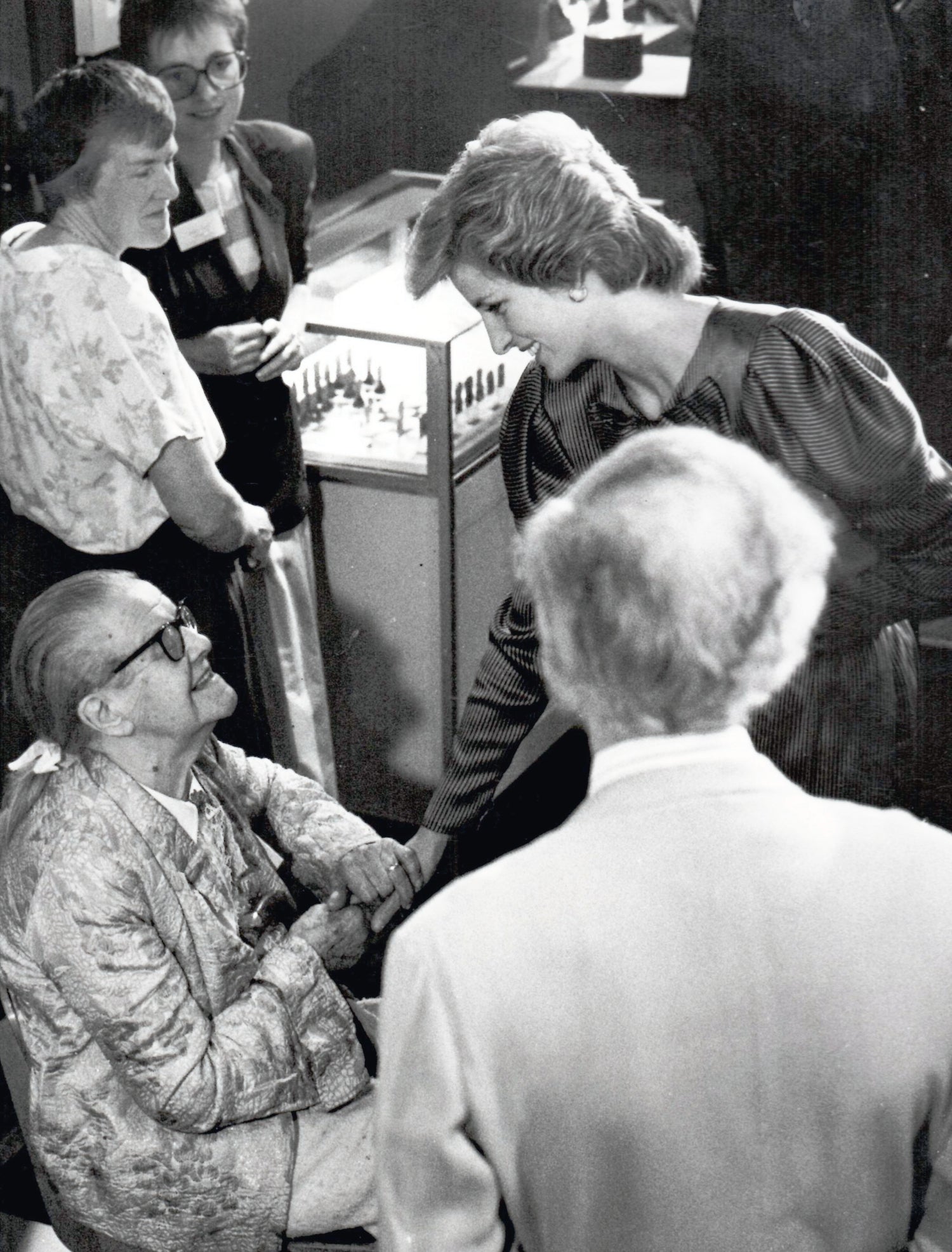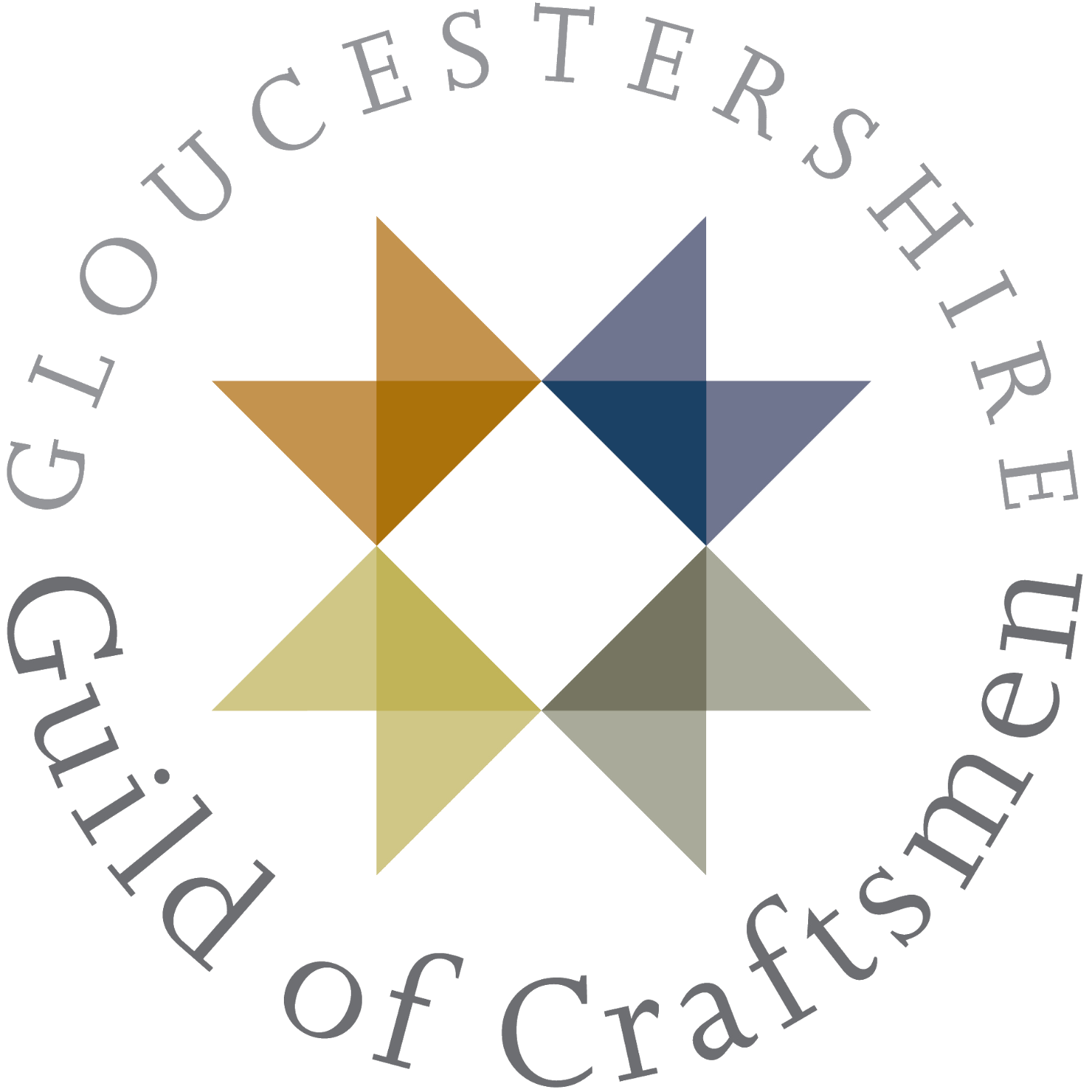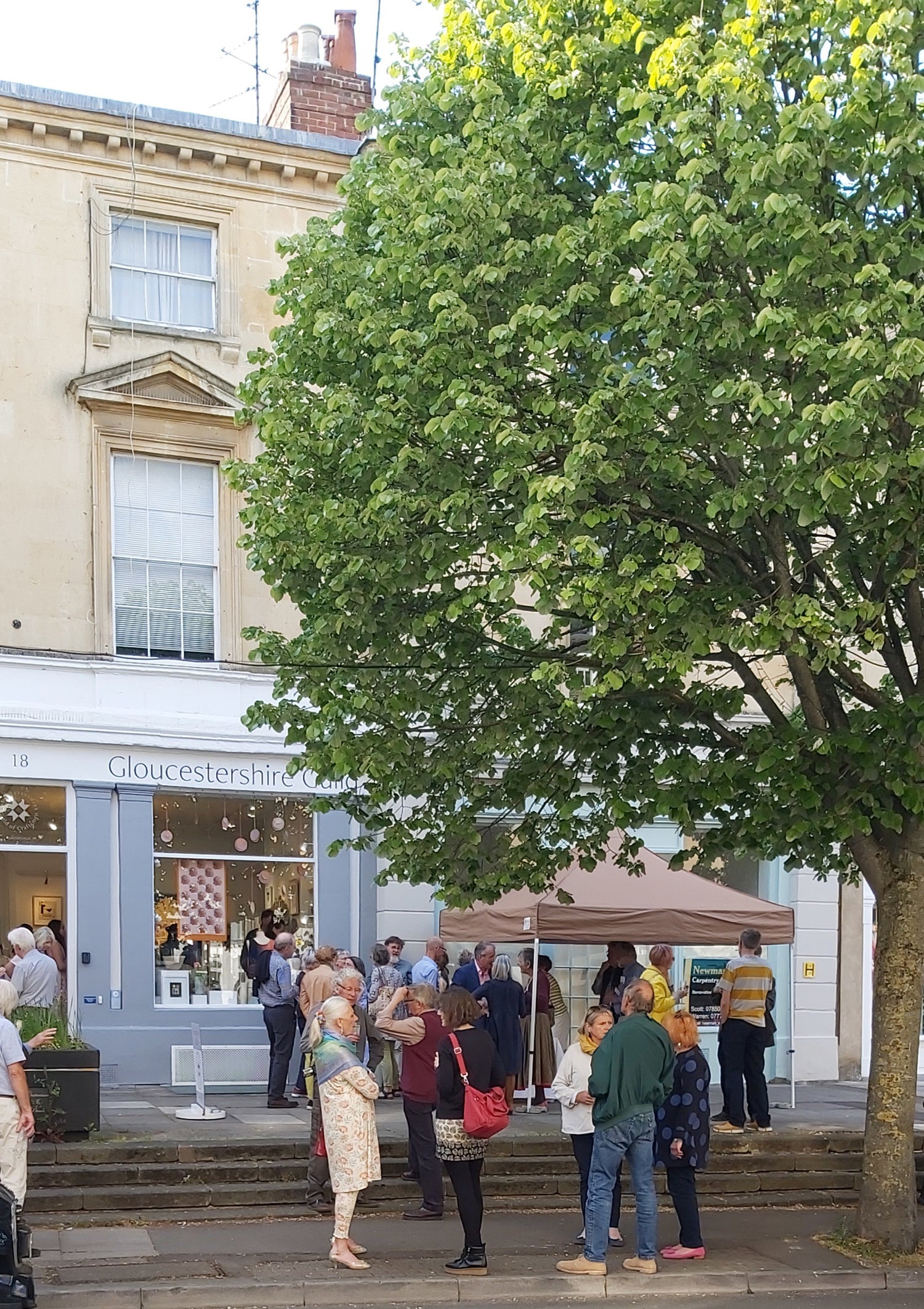Early Guild Members
The Guild of Gloucestershire Craftsmen was founded with about forty members; they included traditional craftsmen such as George Brint, a basket maker from Quedgeley, and W H Hamlin and Son, fishing rod and tackle makers from Cheltenham as well as designer-makers linked to the Arts and Crafts Movement.
Some such as furniture maker Peter Waals, stained-glass artist Paul Woodroffe, potter Michael Cardew,and the hand-block printers Barron and Larcher had international reputations. The Guild issued a blue sign for display outside members’ workshops.
As patrons of the Guild, the Duke and Duchess of Beaufort did much to promote its work
Painswick
In 1937 The Guild began its long association with Painswick.
The first summer show was held in the village and, until the move to Cheltenhamin 2013, Painswick was the Guild’s main showcase.



